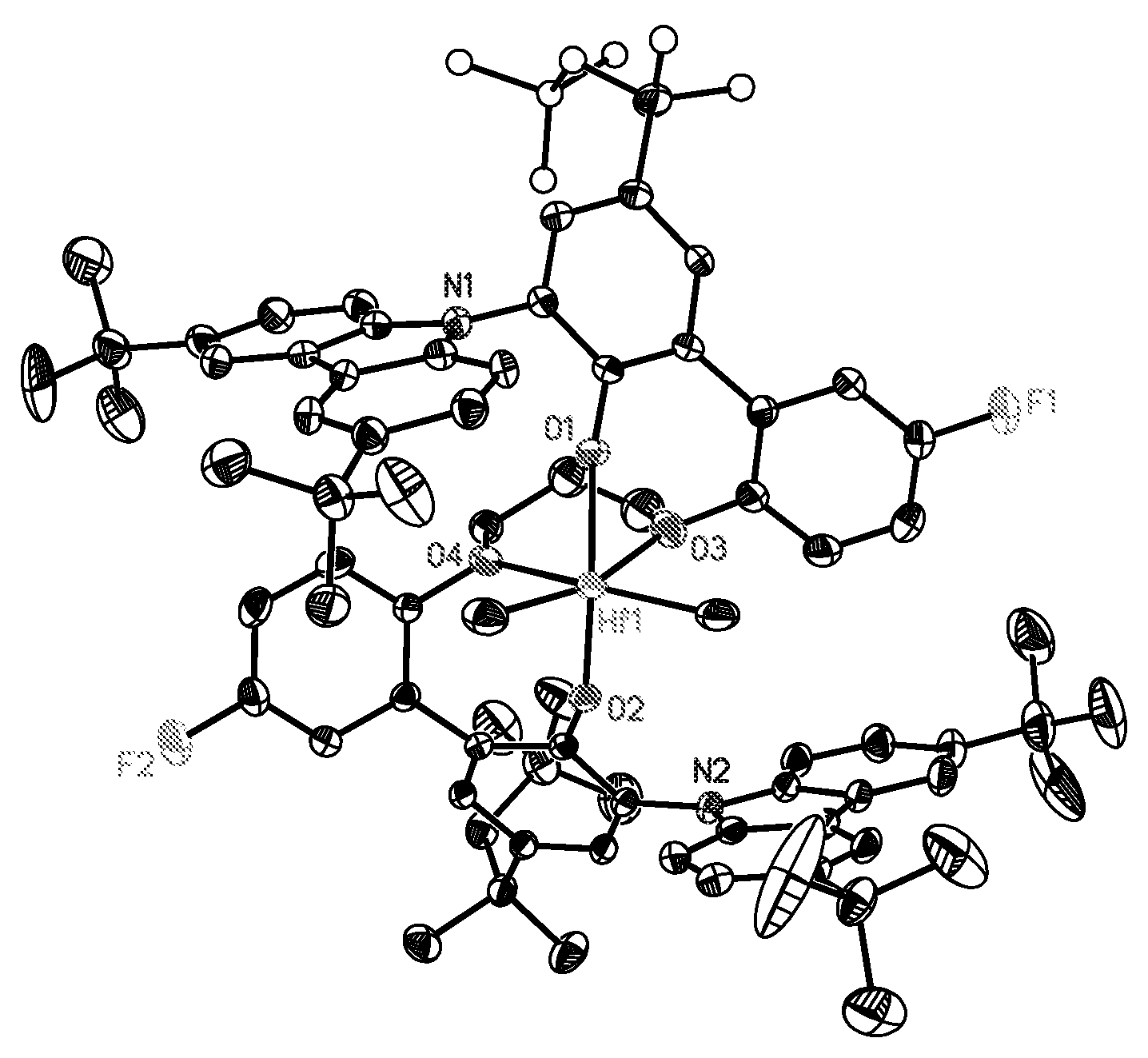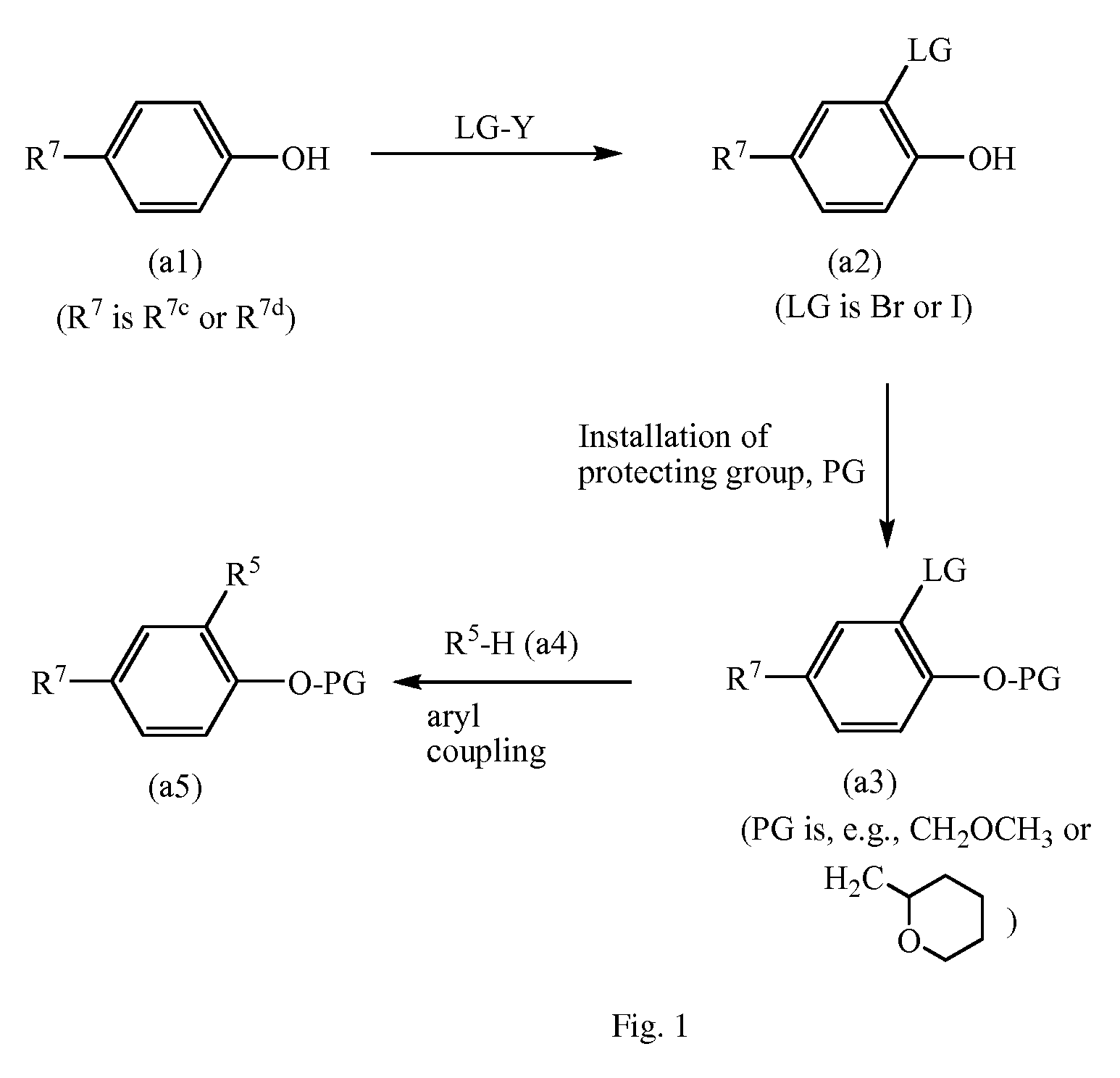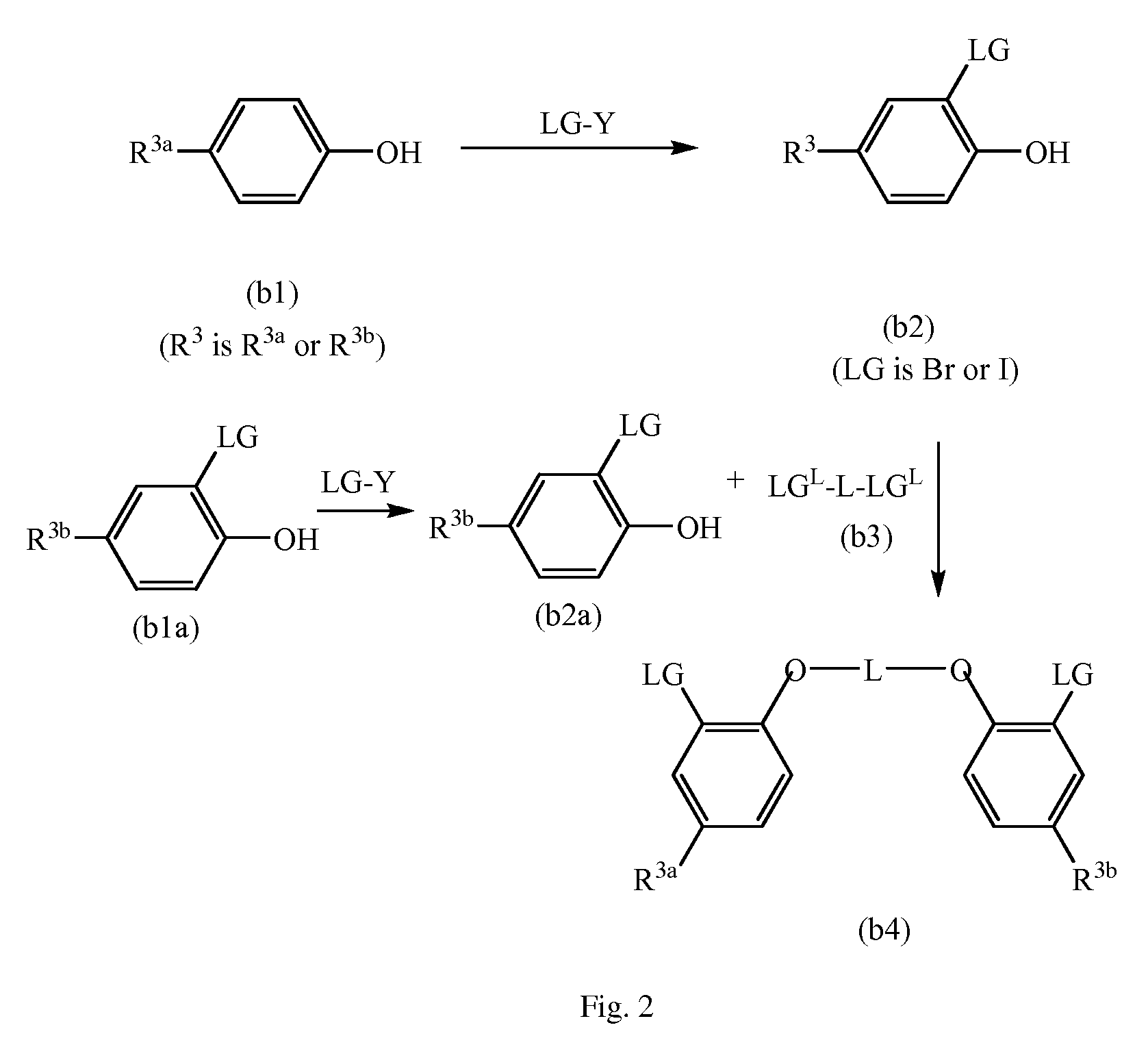Process for polymerizing a polymerizable olefin and catalyst therefor
a technology of polymerizable olefin and catalyst, which is applied in the direction of chemical/physical processes, group 4/14 element organic compounds, and group 8/9/10/18 element organic compounds, etc., can solve the problems of difficult discovery of such a (pre)catalyst, and achieve the effect of reducing solvent costs and eliminating or reducing detrimental health and environmental impacts
- Summary
- Abstract
- Description
- Claims
- Application Information
AI Technical Summary
Benefits of technology
Problems solved by technology
Method used
Image
Examples
preparation 1
Preparation of Intermediate, 3,6-bis(1,1-dimethylethyl)-9H-carbazole, (P1)
[0241]
[0242]To a 500 mL three-necked round bottom flask equipped with an over head stirrer, nitrogen gas bubbler, and an addition funnel add 20.02 g (120.8 mmol) of carbazole, 49.82 g (365.5 mmol) of ZnCl2, and 300 mL of nitromethane at room temperature. To the resulting dark brown slurry add 49.82 g (365.5 mmol) of 2-chloro-2-methylpropane (also known as tertiary-butyl chloride or t-BuCl) dropwise from the addition funnel over the period of 2.5 hours. After completing the addition, stir the resulting slurry for an additional 18 hours. Pour the reaction mixture into 800 mL of ice cold water, extract with 3×500 mL methylene chloride, combine and dry the extracts with anhydrous magnesium sulfate, filter, and concentrate the filtrate first by rotary evaporation and then by evaporation under high vacuum to remove nitromethane. Dissolve the resulting residue first in hot methylene chloride (70 mL) followed by hot h...
preparation 2
Preparation of Intermediate, 2-iodo-4-(2,4,4-trimethylpentan-2-yl)phenol, (P2)
[0245]
[0246]To a stirred solution of 10.30 g (50.00 mmol) of 4-(2,4,4-trimethylpentan-2-yl)phenol in 125 mL of methanol at 0° C., add 7.48 g (50.00 mmol) of NaI and 2.00 g (50 mmol) of NaOH. To the resulting mixture add 86 mL of 5% aqueous NaOCl solution (commercial bleach) over a one hour period. Stir the resulting slurry for one more hour at 0° C. Then add 30 mL of aqueous 10% Na2S2O3 solution, and acidify the resulting reaction mixture with addition of dilute hydrochloric acid. Extract the resulting mixture with methylene chloride, wash the resulting organic layer with brine, and dry it over anhydrous magnesium sulfate. Remove volatiles and purify the resulting residue by flash chromatography on silica gel eluting with 5 volume percent (vol %) ethyl acetate in hexanes to yield 11.00 g (66%) of (P2) as a viscous oil.
[0247]1H NMR (CDCl3) δ 7.60 (d, J=2.5 Hz, 1H), 7.25 (dd, J=8.5 and 2.2 Hz, 1H), 6.90 (d, ...
preparation 3
Preparation of Intermediate, 2-iodo-1-(methoxymethoxy)-4-(2,4,4-trimethylpentan-2-yl)benzene, (P3)
[0250]
[0251](A general procedure for methoxymethyl-ether (MOM-ether synthesis.) To a stirred solution of 4-(2,4,4-trimethylpentan-2-yl)phenol (P2) (9.50 g, 28.61 mmol, Preparation 2) and dimethoxymethane (25 mL, 286.2 mmol; DMM) in 150 mL of methylene chloride under the nitrogen atmosphere, add 14.00 g (99.29 mmol) of P2O5 in portions over a period of 1.5 hours. After the final addition, stir the resulting reaction mixture for another 1.5 hours. Then decant the resulting solution, and pass the decanted liquid through a small bed of silica gel. Wash the resulting solution successively with water and brine, and dry the washed solution over anhydrous magnesium sulfate. Pass the dried solution through a small bed of silica gel, and remove solvent to yield 9.90 g (92%) of pure (P3) as a viscous oil.
[0252]1H NMR (C6D6) δ 7.88 (d, J=2.2 Hz, 1H), 7.03 (dd, J=2.5 Hz and 8.5 Hz, 1H), 6.89 (d, J=8...
PUM
| Property | Measurement | Unit |
|---|---|---|
| temperature | aaaaa | aaaaa |
| temperature | aaaaa | aaaaa |
| temperature | aaaaa | aaaaa |
Abstract
Description
Claims
Application Information
 Login to View More
Login to View More - R&D
- Intellectual Property
- Life Sciences
- Materials
- Tech Scout
- Unparalleled Data Quality
- Higher Quality Content
- 60% Fewer Hallucinations
Browse by: Latest US Patents, China's latest patents, Technical Efficacy Thesaurus, Application Domain, Technology Topic, Popular Technical Reports.
© 2025 PatSnap. All rights reserved.Legal|Privacy policy|Modern Slavery Act Transparency Statement|Sitemap|About US| Contact US: help@patsnap.com



